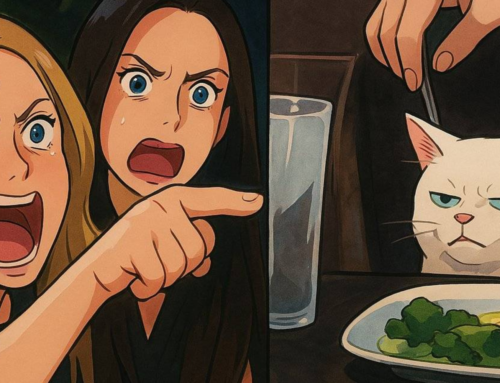My body is in great shape, and I am healthy and strong, all because I made the commitment to eat GMO-free in 2002.
Without laws requiring genetically modified food to be labeled in the United States, if I want to exclude GMOs from my diet, I have to be extremely selective about the food that I allow myself to eat.
The beneficial side effect is: I primarily eat natural foods, and this is the secret of my health, high energy, and productivity.
I never eat fast food, I rarely eat food that comes in a box, and most of the food that enters my body comes from whole, unprocessed ingredients.
You know. Actual food.
Being healthy has been an unintended, but advantageous, by-product of my decision to eat GMO-free. I eat only the highest quality organic food, and only when I am able to source the ingredients.
But, it’s not all on the upside.
3 Disadvantages of Eating GMO-Free
1. Convenience
If I am halfway across the city and hungry, I am unable to pop into any of the dozens of restaurants nearby and grab a quick bite. I have to plan my meals in advance, and pack my food with me whenever I leave the house. My backpack is always filled with organic rations to keep me fed throughout the day.
2. Socializing
As humans, we spend lots of communal time around food. Relationships are forged when sharing a meal together. My time in college was socially stunted, because my peers all shared time in the dining hall together, while I sat under a campus tree with a jar of peanut butter and a block of organic cheese. Making casual friendships stronger has been difficult and slow work, compared to others who share meals together.
3. Uncertainty
If I shop or eat outside of my accustomed grocery stores, I am never sure if anything I want to eat is GMO-free or not. To play it safe, I have to decline lots of new and interesting things I’d otherwise like to eat. Unlike 64 other countries in the world, the US has no requirements to label GMOs – yet.
Why GMOs are a bad idea
Contrary to industry propaganda, we have not been cross-breeding plants this way for thousands of years. Genetic modification is a new and untested technology, and the experimental laboratory is our worldwide food supply.
When a farmer grafts a branch from one apple tree onto another, for instance, he is using a plant’s natural ability to combine strains and integrate beneficial traits into a new plant.
When a molecule is genetically modified, a section of DNA from one organism is forcibly inserted into the DNA of another plant.
(This part gets fairly technical, so bear with me.)
DNA is a “ladder” molecule, with pairs of chromosomes alternating in a very long sequence. The DNA in a cell “communicates” with RNA, which then communicates with proteins outside of the cell, by matching complementary chromosomes in a specific order.
When TTAC in DNA is presented to a visiting RNA molecule that is 4 chromosomes wide, the RNA shifts its own chromosomes into GTAA to match, and then takes this sequence over to proteins. The proteins take orders from the RNA based on this specific sequence, and go out and do their thing in the organism.
Human technology (which I happen to generally be a fan of, btw) through genetic modification creates a sequence not found in nature, especially on the border between the original and the inserted DNA. The RNA complements this new sequence, and takes it to a new protein, presenting a sequence that may be outside of the possibility of a healthy protein to ever see.
For instance, if the protein folds in a specific way, it creates a prion, which has been shown to cause brain disease in sheep. Genetic modification makes this type of unintended consequence possible.
And this is just one example. The neonicotinoid pesticides that have been killing off North America’s bee population are due to an unanticipated combination of fungicide and pesticides.
Most other scientific advances that affect human and environmental health have to go through rigorous testing before being released to the public, but GMOs have skipped this entire safety testing process, making our biosphere the experiment lab.
How To Eat GMO Free Without Labels
Without labels telling us what foods are genetically modified, the only safe way to eat GMO-free is to avoid any ingredients that are potentially GMOs unless they are certified organic. As of Fall 2014, here are the types of food that are labeled in other countries as GMOs:
Be especially careful of:
- High fructose corn syrup
- Soy lecithin
- Maltodextrin
- Sorbitol
These anti-caking agents can be included in otherwise-organic foods, and not be organic or genetically unmodified themselves.
Foodbabe has a handy guide: eat these items organic, and you’ll be eating GMO Free:
Eating GMO-Free means: read the label.
Why Does Agribusiness Fight GMO Labeling So Hard?
DuPont made the single largest donation in Oregon’s history to the No on 92 campaign, $4.5 million, outspending the entire re-election campaign of Governor Kitzhaber with a single donation.
In the age of Citizens United, one corporation can spend more on one ballot initiative than a governor spends to get re-elected, because free speech equals money spent in America.
They know that if they had to label their ingredients as genetically modified, in the moment of decision at the grocery store, millions of their products will be left on the shelves in favor of non-modified food.

We do have a built-in override against plutocracy, and that is the democratic process. If you are an Oregonian, please vote Yes on 92, or you are literally championing ignorance.
Why GMOs are not labeled in America
Big agribusiness corporations know that if given a choice, most consumers (96% in a recent poll) would prefer to eat actual food, instead of pesticide laden frankenfood.
Typical GMO apologist claims
1. GMO foods are higher in nutrition
Patently false. None of the modified crops has been proven to be stronger, healthier, or better for the human body than original crops. The laughable example of Golden Rice only helps a human reach the recommended daily allowance of Vitamin A if they eat 27 to 54 bowls of rice. Daily.
Most crops are genetically modified in order to withstand higher concentration of pesticides, also sold by the same company doing the modification. It’s a cross-selling technique to poison more of your food.
2. GMOs are better for the environment
The largest GMO crop in the US is Roundup Ready Soy. This crop is not mutated to be stronger or healthier on its own, it is modified to specifically resist the poison weedkiller Roundup (also manufactured by Monsanto). GMO Soy is sprayed liberally with pesticides, which carries its own health hazards. 95% of all US soy is GMO, making it the single worst ingredient that you can eat.

3. Labeling GMOs will cost farmers lots of money.
Most farmers, if they want to avoid labels, will stop buying Monsanto seed and buy organic seed instead. Monsanto will lose market share. The farmers will go on growing crops, but buy their seeds from someone else.
Labeling GMOs will not cost farmers lots of money. It will cost Monsanto lots of money.
Why are GMOs even legal?
Industry science is paid for by the agribusiness industry, and there are plenty of examples of Monsanto and Dow shutting down scientists that provide inconvenient results in their experiments.
The FDA is manned by former Monsanto execs, and the revolving door between Monsanto and the agencies that regulate them is well-known.
US Politicians often don’t take positions against the agribusiness behemoth, because in American government, political capital is provided by lobbyist funds, and Monsanto has lots of money on K street.
In the most supreme example of Monsanto’s control of the US Government, the quietest member of the Supreme Court, Clarence Thomas, is a former Monsanto attorney.
There are not very many conditions that could bring about a zombie apocalypse, but Monsanto happens to champion a number of them as good for the environment and good for the economy.
Monsanto the Vampire
If corporations are people, they should be able to die. Someone should be able to take a bounty out on this person called Monsanto, and pay a million dollars to bury them, and present the world proof of their demise.
But corporations are not people – they are immortal legal fictions that, when given the rights of people, rule us like vampires.
I refuse to eat the food that a vampire provides for me.
If you would do the same, and eat GMO-free, you will gain the habits of healthy eating that make life more invigorating.
Someday soon, you may be able to do it easily, just by checking the label.


















Me too! Awesome